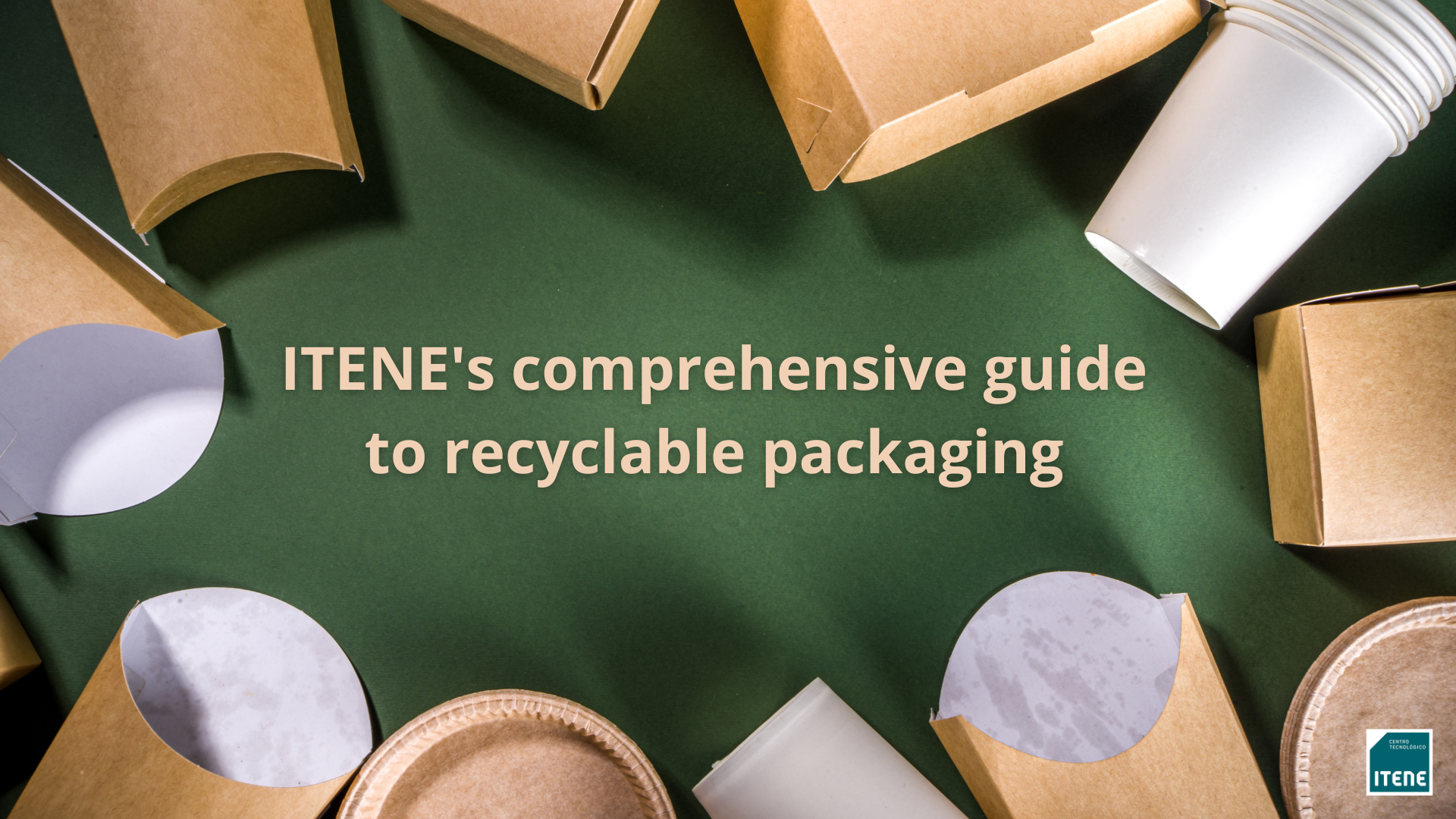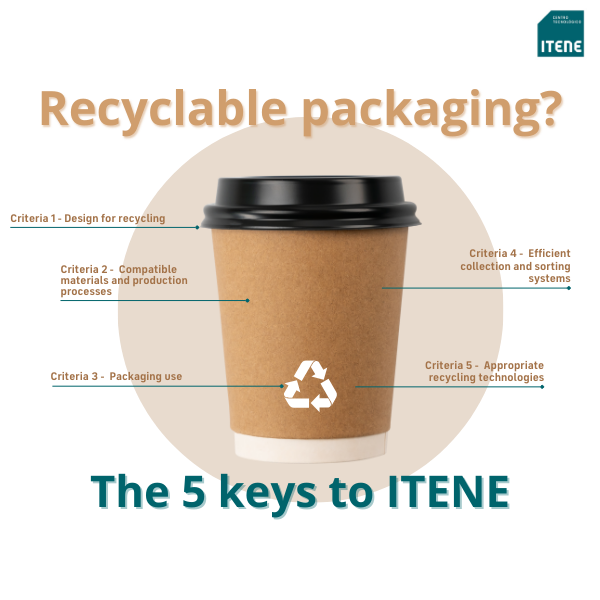How to know if a packaging is recyclable: ITENE’s complete guide to comply with regulations
The packaging industry is profoundly transforming towards a circular economy, driven by growing environmental concerns, consumer demand for sustainable solutions and an increasingly demanding regulatory framework. Both the Law on Waste and Contaminated Land for a Circular Economy, the recently approved Royal Decree 1055/2022 on Packaging and Packaging Waste in Spain and the imminent European Packaging and Packaging Waste Regulation promote waste reduction, recycling and the use of sustainable materials in packaging production.
This paradigm shift is not only redefining the sector’s future but is already having a significant impact on its present. The industry is forced to innovate and adapt to the new requirements, seeking solutions to meet the ambitious targets set, such as the European Union’s goal of achieving a packaging recycling rate of over 65% by 2025. In this context, the correct identification and sorting of recyclable packaging becomes even more important, both to comply with legal requirements and to drive the transition to a more sustainable production and consumption model.

The 5 keys to know if a packaging is recyclable
Recyclable packaging is packaging that, after use, can be processed and transformed into a new material or product. The European standard UNE-En 13430: 2005 is the procedure recognised by the Royal Decree on Packaging to demonstrate the recyclability of packaging. Specifically, this procedure establishes five fundamental criteria for considering packaging as recyclable:
Criteria 1. Design for Recycling
The packaging design should prioritise the ease of separation of its components and their correct sorting in recycling plants. Mono-material packaging, composed of a single type of material, is generally easier to recycle than multi-layer packaging, which in some structures may combine different materials. The challenge is therefore to develop new mono-material packaging with improved properties (which do not require more than one layer to protect and extend the shelf life of the products they contain) or to develop new recycling technologies that help to recycle those materials that are not currently recovered.
Criteria 2. Compatible materials and production processes
The materials used in the manufacture of the packaging must be suitable for recycling and not contain substances that hinder or impede its processing. Production processes must also be compatible with recycling, avoiding contamination of the material.
Criteria 3. Packaging Use
The stages of use of the packaging should allow for subsequent recycling of the packaging, e.g. by encouraging effective emptying or disposal in appropriate containers. This means incorporating intuitive design elements and clear communication, including the harmonised symbols to be established by the new EU Waste Regulation. These symbols will facilitate the identification of materials, contributing to more efficient waste management and promoting the circular economy.
Criteria 4. Efficient collection and sorting systems
The existence of selective collection systems and sorting plants capable of separating the different packaging materials is crucial to ensure their subsequent recycling.
Criteria 5. Appropriate recycling technologies
The packaging material must be compatible with industrially available recycling technologies, allowing its transformation into a new quality recycled product.
Recyclability Assessment: Experimental Methods
The recyclability assessment can be completed by experimental tests. These processes make it possible to verify their compatibility with recycling processes.
In the case of paper and cardboard, procedures such as those of ATICELCA or CEPI (to assess the recyclability of paper) and INGEDE (to study de-inkability) stand out. For plastic packaging, the Recyclass recyclability assessment protocols for different polymers stand out.
La importancia de la economía circular en el sector del envase
The new European Packaging and Packaging Waste Regulation is a challenge but also an opportunity for the sector. Recyclability assessment is a key tool for adapting to the new regulation and moving towards a more circular production and consumption model. Companies that are committed to innovation and sustainability in their packaging design will be better positioned to face the challenges of the future and contribute to a cleaner planet.
The transition to the circular economy in the packaging sector is not only necessary to comply with national and European legislation, but also represents a significant opportunity for innovation and sustainability. The assessment of the recyclability of packaging, based on the UNE-EN 13430:2004 standard, and the implementation of efficient collection and recycling systems are fundamental steps towards achieving the environmental targets set for the coming years.
Companies that lead this change will not only contribute to a cleaner environment, but will also position themselves as leaders in an increasingly conscious and demanding market.
-
Shall we talk?
César Aliaga
Head of Packaging and Circular Economy Unit
"*" indicates required fields

